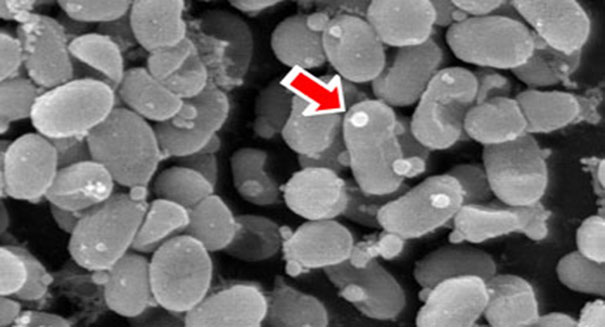
Researchers find the first widespread evidence of vesicles in ocean life
Marine scientists at the National Science Foundation’s Center for Microbial Oceanography have discovered that marine cyanobacteria create tiny “vesicles” of carbon and nutrients that act as a food source for ocean life. This is in addition to themselves being the tiny plant life that forms the very foundations of the oceanic food chain. They are very busy little bees, only they are plants, and not bees.
Vesicles themselves are not news, having been observed in human-related bacteria since the 1960s. However, this study marks the first instance of their observation in ocean life, adding a new wrinkle to scientists’ understanding of these tiny workhorses.
“The finding that vesicles are so abundant in the oceans really expands the context in which we need to understand these structures,” says MIT postdoc Steven Biller. “Vesicles are a previously unrecognized and unexplored component of the dissolved organic carbon in marine ecosystems, and they could prove to be an important vehicle for genetic and biogeochemical exchange in the oceans.”
The vesicles are indeed tiny, each approximately 100 nanometers in diameter. For reference, that’s smaller than a HIV sample, and about the largest diameter of something that could fit through a surgical mask. They are truly microscopic.
Biller’s analysis of the genetic material in the vesicles recovered directly from the environmental samples of sea water revealed sequences from a diverse array of bacteria, suggesting that vesicle production is common to many marine microbes. The researchers estimate the global production of vesicles by Prochlorococcus alone at billions of billions per day, which represents a notable addition of carbon to the otherwise scarce nutrient pool of the open seas.
Besides serving as a food source, vesicles might also deflect viruses, researchers said. Previous research has shown that viruses are more likely to attack bacteria that have vesicles in them. Similarly, Prochlorococcus has lost the ability to neutralize certain chemicals and depends on nonphotosynthetic bacteria to break down chemicals that would otherwise act as toxins. It’s possible the vesicle “snack packets” help make this relationship mutually beneficial.
As if that weren’t enough, researchers also found that the vesicles also contain genetic information, meaning they might play a role in DNA and RNA transfers, which help ensure genetic strength and diversity among Prochlorococcus population.
Vesicles – the multitaskers of the marine world.
Leave a Reply